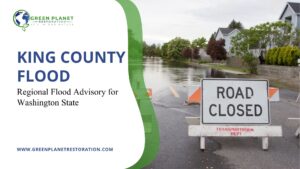If you have a plumbing emergency, it can be difficult to know what to do. This article will help guide you through the process of dealing with a variety of common emergencies so that you don’t make any mistakes or face any dangerous consequences. We will talk about how to handle frozen pipes, clogged drains and toilets, leaks from pipes and faucets, and overflow from sinks and bathtubs. In short, every problem you might ever encounter!
Also read: How to Find Home Leaks
Frozen Pipes
There are a few different solutions for dealing with frozen pipes, depending on the situation. If you know that your pipes have been outside or in an uninsulated area where they could freeze, it’s important to prevent them from freezing by insulating them at all costs! You can do this using heat lamps and keeping covers over any exposed pipes. If you don’t know what to do, call a plumber as soon as possible.
Also read: Home Water Leaks: What You Must Know
To thaw out your pipes a little bit before calling the plumber, turn on any hot water faucets in your house and allow them to run for about five minutes. You can also use heat lamps around the area of the frozen pipe, or if you have an electric stove, use the oven to heat up things around the frozen pipe.
Also read: Leaking Ice Makers: Why They Happen and How to Prevent Them
If your pipes are still in good enough condition but just partially frozen and you are not too worried about them breaking, all you need to do is wait for a day or two, and they will thaw out on their own. However, if it’s only one or two pipes that are frozen, it might be a good idea to thaw them out as soon as possible.
Also read: Preventing Water Leaks: Types and How to Do It
If your pipe is already broken and leaking water into the house, make sure you turn off any faucets in your home so there is not too much pressure on the leaky pipe. Turn off the power for safety reasons. Now, find a watertight container and fill it up with sand. Place the container on top of your broken pipe to help distribute the weight more evenly.
Clogged Drain
If your drain is clogged, the best way to unclog it is by using a plunger. Fill up the sink with water and place the plunger on top of it so that there is an airtight seal (make sure you don’t put too much pressure). Now pull back on the plunger slowly while pushing down at a steady pace. If that doesn’t work, pour hot water down the drain and try again.
Also read: 6 Reasons Why Your Air Conditioner Is Leaking
If it’s still clogged after using a plunger, you can use an auger to clear the pipe of any debris inside. You want to be careful when drilling into your pipes because there are likely other piping systems nearby that could result in major damage.
If you don’t have the proper tools, there are a few other methods for unclogging your drain. You can pour baking soda and vinegar into the clogged area in an attempt to create suction, but this is probably not going to work on its own. If that doesn’t work, you will need to use boiling water or hot sauce to get the job done.
Also read: 8 Common Causes of Household Water Leaks and Water Damage
You can also use a garden hose with an attachment or even your vacuum cleaner in order to break up any clogs that are obstructing water flow. A plunger is one of many tools you will need if something goes wrong with your pipes, and it’s always better to be prepared for the worst-case scenario.
Clogged Toilet
If you notice a toilet that is clogged or not flushing, the first thing to do is shut off the water supply and flush. If this doesn’t work, then there are other methods for unclogging your drain, such as using baking soda, vinegar, boiling water, hot sauce, or even a plunger – whichever works best!
Also read: How do you recover from water damage?
Leaking Pipe
If you have a leaky pipe, the first thing to do is cut off all of the water. Put protectors on your hands and then unscrew any caps that may be keeping in place any hoses or pipes that are connected with the leaking one – only if they are not too hot!
Once this has been done, flip up the flapper valve on the toilet and turn off all of your water sources outside. Next, wrap a towel or old blanket around where you turned off the water supply to prevent any leaks from happening again. Now that this has been done, call in an emergency plumber!
Also read: Water Damage Restoration Costs: Why Is Water Damage So Expensive?
Leaking Faucet
If you have a leaking faucet, turn the water off before unscrewing any caps that may be keeping in place any hoses or pipes connected with it. Simply remove the old washer and replace it with a new one – if needed! There are many different ways to deal with these types of emergencies, so just do what works best for your specific problem!
Also read: Flood Damage Cleanup vs. Sewage Damage Cleanup
Sink Overflow
If your sink is overflowing or about to overflow, you should first check the drain for any objects that may be blocking it. If no blockage can be found, try wrapping a rag around the handle of the tap and holding it in place while turning on all faucets one by one until water flow turns back on.
Also read: The Water Damage Restoration Process
Bathtub Overflow
In case of a bathtub overflow, first make sure the bathtub is empty before trying to fix it. If this still doesn’t work, then try and use a plunger on the drain, or else wait for two hours, since an overflowing tub may be clogged by hair that has grown over time.
If you need more assistance with any of these problems, we recommend contacting a professional plumber who can provide assistance.
Also read: Should I File an Insurance Claim for Water Damage?
Hire Green Planet Restoration for All Your Plumbing Emergencies.
Plumbing problems don’t wait, and you shouldn’t either. Although this 24 Hour Plumbing Emergency Guide can assist you in handling the current situation, some problems call for professional assistance to prevent costly repairs or health risks. Please do not hesitate to contact Green Planet Restoration for all water leak damage restoration or if you are uncertain about how to proceed. 24/7, our certified experts are available by phone and prepared to help you regain your peace of mind.
Did sewage or floodwater soak into your drywall? Learn Why You Must Replace Sewage-Damaged Drywall And How to Do It
___________________
Related Posts
Complete Guide to Crawl Space Maintenance and Cleanup
24 Hour Plumbing Emergency Guide
How LGR Dehumidifiers Prevent Secondary Damage
How Moisture Meters Prevent Mold Growth
Leaking Ice Makers: Why They Happen and How to Prevent Them
How To Handle Flood Damage in Southern California
Should I File an Insurance Claim for Water Damage?
8 Common Causes of Household Water Leaks and Water Damage
Psychrometry in Water Damage Restoration: How It Protects Your Home
Pin vs Pinless Moisture Meters: What’s the Most Accurate Moisture Meter for Walls?







